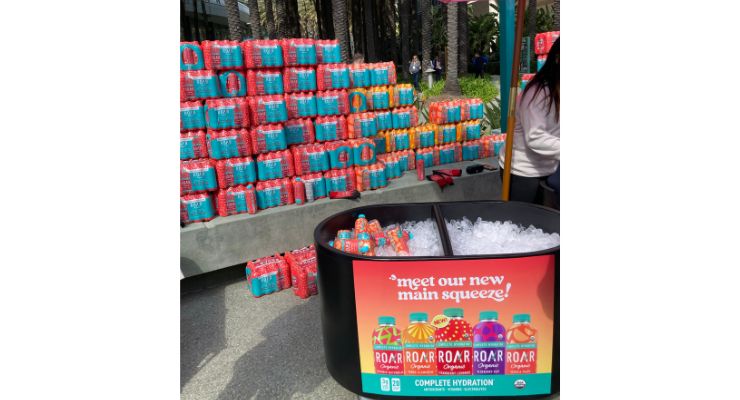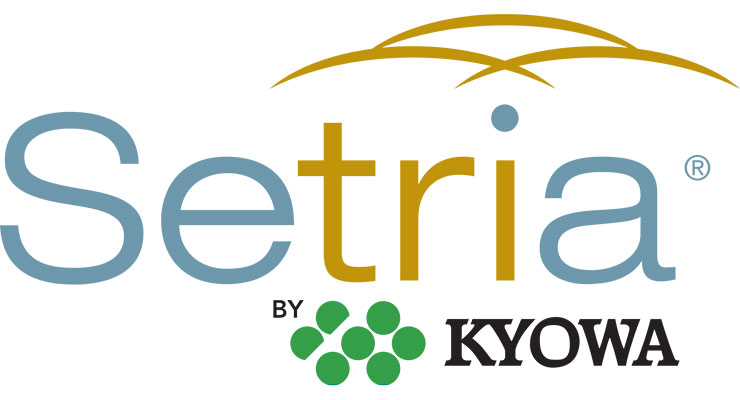Features
Adapting Antioxidant Messaging for Specific Use Cases and Functional Benefits
Brands are repositioning antioxidant claims, pairing them with other health platforms to offer more context and better target consumer groups.

By: Sean Moloughney

Associating excessive oxidative stress with negative health outcomes, consumers have largely viewed antioxidant-positioned products like drinks and supplements as general health solutions. Increasingly though, momentum is building toward aligning antioxidants with specific benefits, like fitness and hydration, energy, immune health, cognition, and more.
Brands recognize that claiming “antioxidants” alone may not be compelling enough to attract consumers or justify their use in formulations, said Paul Altaffer, chief science officer, RFI Ingredients. “This creates a wonderful opportunity for product developers and scientists to link antioxidants to a variety of different health benefits, including gut health, immune health, inflammation, gut-to-brain benefits,” and a variety of other platforms.
Antioxidants can play a variety of functions and have been center-stage in the dietary supplement and functional products market for years, noted Denis Alimonti, director of U.S. nutrition, Maypro. “Oxidative stress contributes to issues such as aging and fatigue, so we’re seeing a lot of interest from formulators working in healthy aging as well as active and sports nutrition.”
While many demographics can benefit from antioxidants, “we see the strongest enthusiasm among those who intensively exercise, such as endurance athletes and bodybuilders,” he added, and those who are familiar with the anti-inflammatory and circulatory benefits.
Often infused with “superfoods” like acai berries, pomegranates, blueberries, matcha, and turmeric, antioxidant drinks are typically marketed as part of a holistic approach to health and wellness, said Shaheen Majeed, CEO, BGG Americas. “These ingredients, valued for health benefits and exotic flavors, cater to consumers seeking wellness and taste. Post-Covid, immunity shots with berry and herb ingredients have gained popularity.”
The pivot to pitching specific health benefits has led product development teams to immune health support, energy enhancement, cognitive function benefits, and post-exercise recovery, Majeed said. “Consumers seek beverages that go beyond quenching thirst, providing tangible health benefits.”
Specificity also aligns with the emerging personalized nutrition trend, with consumers seeking products tailored to their specific health needs and goals. “Though challenging in the ready-to-drink market, some brands explore customization through digital platforms or products targeting particular demographic groups or health concerns,” said Majeed.
Overall, as more consumers understand and accept the general premise that too much oxidative stress can have negative health implications, there continue to be new opportunities to develop antioxidant-positioned products, said Shawn Baier, vice president of business development, TSI USA LLC, which is focused on educating brands and consumers that not all oxidative stress is bad.
“There is a balance our bodies strive for,” Baier said. “It’s impossible to completely remove all causes of oxidative stress in their lives.”

Product Preferences
What are consumers looking for in a crowd of product options? Transparency and simplicity in ingredient lists, for one, Majeed said.“Clean labeling, highlighting the absence of artificial additives, preservatives, and sweeteners, is key,” he noted. “Transparency about ingredient sources and health benefits appeals to conscientious consumers.”
Aligning with the broader dietary supplement marketplace, people are searching for natural and organic sources of antioxidants, according to Brian Happel, national sales manager, Applied Food Sciences (AFS). “Consumers want their nutrition to come from real food, but often fail to include antioxidant-rich fruits and vegetables in their regular diet,” he said.
Gen Z in particular is proving to be very health-conscious with an eye toward preventing health conditions, Happel added. “They are concerned with healthy aging, skin health, and cognitive performance, all areas that can benefit from antioxidants.”
Authenticity of a brand’s story is another important feature for younger consumers, Happel said, strengthening the case for natural and organic antioxidant sources.
Innovation in flavor profiles and product formats can help brands stand apart, said Majeed. “Manufacturers experiment with unique combinations, incorporating antioxidants into sparkling waters, herbal teas, functional shots, and smoothies. This diversity caters to a wide range of tastes and consumption occasions.”
Single-serve packaging, ready-to-drink formats, and products easily consumed on the go appeal to busy consumers, aligning with the broader trend of convenience in food and beverage consumption, he added.

Strong Thirst for Functionality
Aligning with healthy lifestyles, the functional drinks market has been a large landing spot for antioxidant ingredients and claims. “Healthy soda has taken over the beverage aisle. Shots, tonics, and beauty-from-within drinks are all branching out of general wellness into more niche categories, and are starting to include more diverse groups of ingredients,” said Baier. “Green tea and blueberries are not going anywhere, but consumers are interested in innovation in the antioxidant space.”Howard Telford, head of soft drinks at Euromonitor International, noted that antioxidant claims are generally more common in vitamins and dietary supplements than in drinks. “According to our Product Claims and Positioning data set from 2022, about 10.5% of vitamin and dietary supplement SKUs we tracked in the U.S. made antioxidant claims on pack in 2022, versus about 6% of soft drinks,” he said.
Within the drinks category, claims were most common in ready-to-drink tea (particularly green tea), juice, and sports drinks. “In terms of sales, many of the most prominent beverage products making antioxidant claims in the U.S. tend to be fruit juices, although the wider 100% juice category has not performed well over the last few years,” Telford said.
Hot tea (bagged or dry leaf) is another category where antioxidant claims are prevalent, appearing in 10% of the SKUs tracked by Euromonitor. “In this instance, there are several herbal blends containing ingredients like elderberry or hibiscus and making an immune-support claim due to high levels of antioxidants, vitamin C and/or other functional botanical additives,” he added. “Within beverages, immune support and post-athletic replenishment/rehydration are two need-states where antioxidants tend to resonate with consumers.”
Separately, antioxidants are also an important driver within beauty and personal care products that are positioned for skin health and anti-aging properties, Telford added.
Teas are a natural fit for antioxidant messaging as most people associate them with delivering antioxidants, especially green tea, Happel said. “Also, the hydration category is maturing into functional hydration, or hydration plus, making it an ideal way to deliver electrolytes and healthy antioxidants in a single beverage or stick-pack.”
Combining antioxidants with other categories is a great approach, said Baier, such as immune plus antioxidants, gut health plus antioxidants, and energy plus antioxidants.
Known for its range of antioxidant-infused beverages, Bai drinks recently rebranded its tagline “Antioxidant Infusion” to “It’s WonderWater,” featuring electrolytes along with antioxidants and natural sweeteners (stevia and monk fruit). The company also added 15 mg of zinc, which it noted helps support a healthy immune system in combination with vitamin C (or vitamin E in coconut varieties).
Bai also launched a new raspberry lemon lime flavor in partnership with actress Sydney Sweeney and noted its bottles are now made of 100% recycled plastic.
Available in RTD and powder formats, Roar Organic’s Complete Hydration product line features antioxidants, vitamins, and electrolytes from an organic coconut water base.
Karma Water, with its patented Push Cap that protects active ingredients inside the cap until consumers are ready to drink the product, offers a Wellness Water variety positioned for hydration and immune support that contains “a proprietary blend of natural superfruits, antioxidants, and vitamins that delivers 6 times the active ingredients of premixed vitamin waters.”
Functional waters appeal to consumers seeking hydration with added health benefits, noted Majeed. “Their success is driven by the growing demand for beverages supporting wellness goals without added sugars or artificial ingredients.”
In 2023, Coca-Cola launched its “smartwater alkaline with antioxidant” featuring the addition of selenium “to support post-workout muscle” along with a unique electrolyte blend.
Matcha, green tea, and herbal options like hibiscus or chamomile are often marketed for their antioxidant properties. “The well-documented health benefits of these teas, especially their antioxidant content, contribute to their success,” said Majeed. “The natural origin and ritualistic aspect of tea consumption also add to their appeal.”
Rishi Tea, which sells loose-leaf, sachets, powders, and concentrates also offers a RTD tea line called Sparkling Botanicals that are craft brewed with premium ingredients and no added sugar.
Varieties include, for example, Black Lemon, Green Tea Tonic, Dandelion Ginger, Schisandra Berry, and Elderberry Maqui. For the latter, the company says “complex polyphenolics, purple pigments, and other antioxidant contents from pressed red wine grapes along with wild maqui berry”—sometimes referred to as the Chilean wineberry—“provide a unique wine-like character when we steep them in hot water.”
Mushroom-based coffees have seen a jolt of consumer attention in recent years as well. For example, Peak State’s Coffee with Benefits line of roasts includes an Immunity Boost variety that features turkey tail, lion’s mane, cordyceps, reishi, and chaga.
Superfruit juices, such as acai berry, pomegranate, blueberry, and goji berry, are rich in antioxidants and marketed for health benefits like immune support and anti-aging properties, noted Majeed. “The exotic and premium nature of superfruits makes these juices attractive to health-conscious consumers willing to pay a premium for perceived superior health benefits.”
Energy and sports drinks targeting performance and recovery may contain antioxidants to reduce oxidative stress, offering a healthful twist to traditional energy and sports drinks, he added.
Fermented beverages like kombucha also contain antioxidants from tea and other ingredients, along with the added benefit of probiotics.
Additionally, smoothies and meal replacement shakes often include antioxidant-rich fruits and vegetables, catering to consumers looking for convenient nutrition solutions that support a healthy lifestyle. “Combining multiple antioxidant sources in one drink is appealing for its perceived efficiency and health benefits,” said Majeed.
The popular AG1 mix from Athletic Greens, is pitched as “Comprehensive and Convenient Daily Nutrition.” Offering a multivitamin/mineral complex, adaptogens, prebiotics, probiotics, antioxidants, functional mushrooms, and digestive enzymes, the product is “designed to replace multiple supplements by covering nutritional gaps with a comprehensive blend of nutrients,” according to the company.
“Overall, the success of these drink categories highlights a broader consumer shift toward beverages offering functional benefits, aligning with dietary preferences, and supporting a holistic approach to health and wellness,” said Majeed.

Formulation Considerations
Formulators need to weigh several factors to meet consumer expectations, comply with regulatory standards, and ensure the success of their products in a competitive marketplace.For ingredient selection, high-quality, natural sources of antioxidants align with consumer preferences for clean, organic, and sustainably sourced ingredients, Majeed said. “Selecting ingredients with scientifically and clinically supported health benefits is crucial to making credible claims and enhancing consumer trust. Additionally, considering the synergistic effects of combining different antioxidants can further improve the drink’s health benefits.”
Formulators must balance potentially strong or bitter tastes as well. “Achieving this balance involves using natural sweeteners or flavor enhancers without compromising the health profile of the drink,” Majeed said. “Regional and target market preferences in flavor are also essential considerations, recognizing that taste is a primary driver of consumer acceptance.”
Ensuring stability and shelf life involves maintaining the integrity of antioxidant compounds throughout the product’s shelf life.
“This includes choosing packaging that protects the product from light, oxygen, and other factors that could degrade the antioxidants,” Majeed noted.
Some antioxidants can be very unstable, said Happel, such as vitamin C. “Formulators need to consider the processing steps involved in making their product as well as the shipping and storage conditions over the duration of shelf life.” For example, manufacturers may need to add overages of antioxidants “to ensure they still meet label claim by the time the product reaches the consumer.”
Some of the most popular antioxidant ingredients are polyphenolic compounds, Alimonti noted, “however the molecular weight of polyphenols is often too large for humans to absorb effectively. Some types of polyphenols are not easily soluble when formulated in drinks or can require flavoring techniques to mask an unpleasant taste.”
In terms of nutritional profiles, formulators must be mindful of calories and sugar content, said Majeed. Determining whether the product will be marketed as a dietary supplement or a beverage is also crucial, as this affects regulatory requirements and nutritional expectations.
“Regulatory compliance is paramount, requiring careful attention to ensure that all health claims on the packaging and marketing materials comply with local and international regulations,” Majeed said. “Following specific labeling guidelines for nutritional information, ingredient disclosures, and allergen warnings is also imperative.”
Other considerations include sustainability of packaging materials (biodegradable, recyclable, or reusable options), as well as ethical ingredient sourcing such as fair trade and sustainable farming practices, Majeed said.
The Right Pitch for the Moment
Understanding the nuanced preferences and perceptions of various demographic groups toward antioxidant products is key to effective targeting and marketing, according to Majeed.“Health-conscious consumers, typically Millennials and Gen X, are proactive about their wellbeing, prioritizing a healthy lifestyle through regular exercise and a balanced diet. Higher-income segments, often with higher disposable incomes, are willing to invest in health and wellness products, including antioxidants that may be priced at a premium. Educated consumers with a higher knowledge level about health and nutrition are more likely to be attracted to the reported benefits of antioxidants. Women, particularly those interested in beauty and anti-aging, may be drawn to antioxidants for their potential benefits to skin health and overall wellness. Aging populations are attracted to claims related to aging healthfully, preventing chronic diseases, and enhancing longevity.”
Conversely, some demographics are skeptical of antioxidant claims. For example, people with a background in science or health-related fields may seek more rigorous scientific evidence to support broad antioxidant claims.
“Younger generations, such as Gen Z, are often skeptical of traditional health claims and prioritize authenticity and transparency in marketing,” Majeed added “Price-sensitive consumers with limited disposable income may question the value of products with antioxidant claims compared to more affordable, basic nutritional options. Consumers with past negative experiences, having tried health products without seeing promised benefits, may harbor general skepticism toward similar products, including those touting antioxidant properties.”
Addressing skepticism requires tailored strategies for different demographics, he noted. “Providing clear, understandable scientific evidence can mitigate skepticism among scientifically minded individuals. Transparency about sourcing, production processes, and the specific health benefits of antioxidants can build trust. Customizing messaging to resonate with the values and priorities of different demographic segments, focusing on authenticity and tangible benefits, can also be effective. Additionally, community engagement through testimonials, influencer endorsements, and community feedback can help validate claims and reduce skepticism.”
Baier agreed, noting that brands shouldn’t underestimate consumers and claim “miracle” results from their products without evidence.
“Scientific validation through research and development is crucial to scientifically validate the product’s health benefits, significantly enhancing credibility and consumer trust,” Majeed added.
Whether it’s fitness enthusiasts, health-conscious adults, or individuals with specific dietary needs, it’s vital to understand the specific needs and preferences of target markets.
“Developing clear, unique selling propositions is essential for innovation and differentiation,” said Majeed. “This could involve incorporating a unique ingredient, highlighting a specific health benefit, introducing a packaging innovation, or making a sustainability claim.”
— SPONSORED CONTENT —
Setria® Glutathione is a standout antioxidant, supporting your body’s primary defense while fighting off oxidative stress.
Cellular metabolism, the process by which cells make energy to perform life processes, involves the chemical breakdown of oxygen molecules. This reaction causes the production of unstable molecules called free radicals. If left un-neutralized, free radicals accumulate in the body, causing oxidative stress, a type of cell damage that can harm DNA, proteins, and other vital molecules. Oxidative stress is associated with the development of immune disorders, aging, and numerous diseases such as rheumatoid arthritis, cataracts, and cancer.

An antioxidant is a substance that neutralizes a free radical. Glutathione is one of the most important antioxidants in the body because it not only fights free radical damage at the cellular level, it recycles other antioxidants, such as vitamins C and E. Daily glutathione supplementation has been shown to boost glutathione levels in the body. Clinical studies suggest that Setria®, a patented glutathione made by Kyowa Hakko, is effective for raising glutathione blood levels. The finding suggests that Setria® at high dosages may improve immune function and reduce cancer risk.
Setria® Glutathione, by Kyowa Hakko, is a standout antioxidant. Glutathione is a tripeptide found in every cell of the body and it’s critical to preserving cellular integrity. Setria® supports immune health by replenishing the body’s primary defense system, helping fight oxidative stress, supporting healthy respiratory function, and promoting healthy aging and overall health. As the world’s top-selling branded glutathione ingredient, Setria® stands out from generic glutathione options with its long-standing reputation, high-quality manufacturing, clinical studies, and established safety record.



